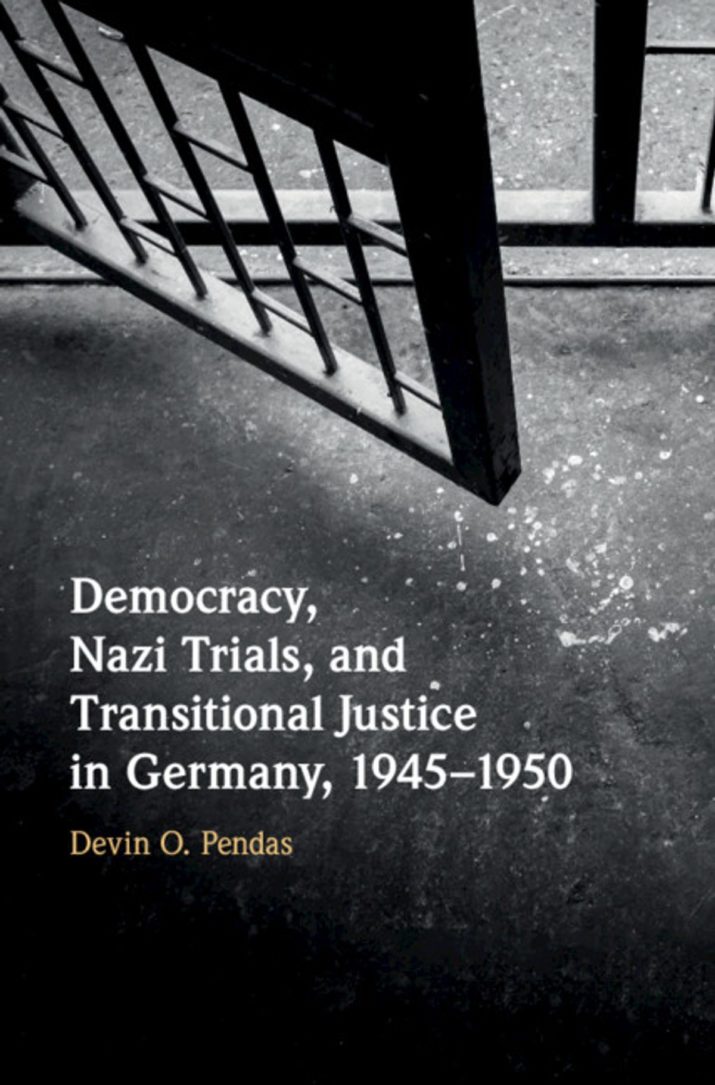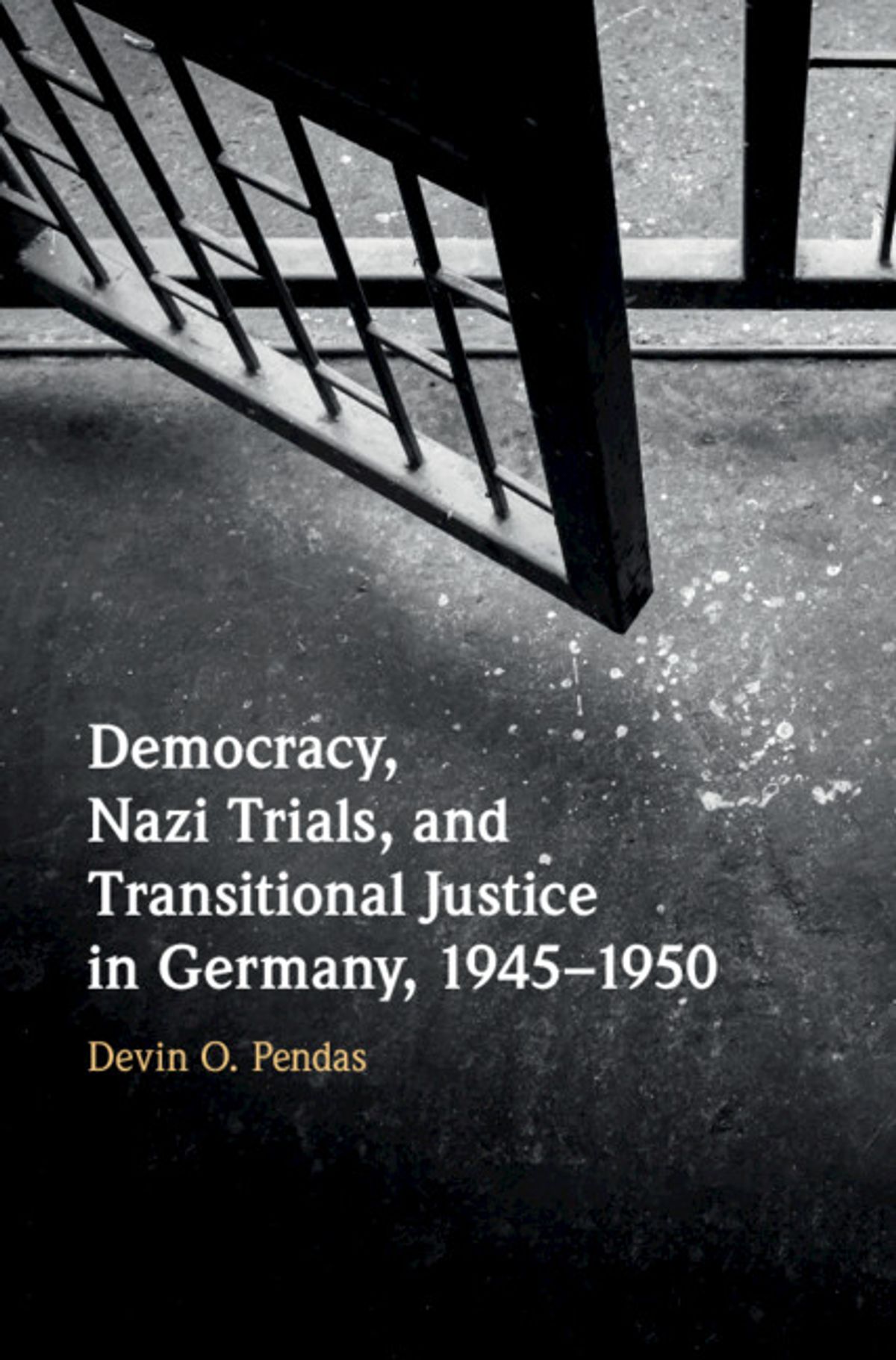

The grand narrative behind much human rights scholarship is that the Nazi regime plumbed the depths of evil, but its defeat yielded the Nuremberg trials, which held that evil to account and ushered in a new era of international justice. Nation-states had created a paradigm for “transitional justice:” the type of political transformations that move dictatorships into democracies and helped Germany to climb out of Nazi dictatorship and reach democratic heights. In his superb new book, Devin Pendas asks: Really? Does the historical record support that triumphant narrative? The inherent problem with answering that question is how to challenge such a widespread approach. Pendas’s solution is to home in on Germany in the five years that followed the war to explore what happened then and there, not just in the blurry entity of a collapsed Nazi Germany, but in the reconstituted (and reconstituting) Germanies. His book does not revisit thinking about transitional justice from the sidelines. Rather, Pendas aims for the center—the very time and place that the transitional justice narrative originated.
Two problems tend to mar studies of “transitional justice.” First, they can be all too teleological, with an ultimate victory distorting the lens for looking back at what had happened during the transition itself. Second, they can be all too universalizing, since the disgust with atrocities (the flip side of the promotion of human rights) applies to everyone everywhere rather than to some people at a particular place. One of Pendas’s early (of many) insights is that a focus on the Nuremberg trials (the famous International Military Tribunal at Nuremberg and the twelve American successor trials) has directed attention to international standards, but, in the process, has also diverted attention from transitional justice within post-war Germany itself.
Pendas finds that the Nuremberg trials had surprisingly little effect on the transition within Germany for implanting liberal democratic norms. While after the trials liberal democrats worldwide admired the Nuremberg and successor trials, at the time, more and more Germans listened to the arguments of attorneys for the Nazi defendants. “The Allied trials,” Pendas writes, “provoked more resistance than introspection among their German audience” (198). What stuck with most Germans was less “the pedagogical lessons” than the hackneyed condemnation of “victor’s justice” (37). Indeed, the Nuremberg and successor trials failed to lay “a useful foundation for the political transformation of postwar Germany” (64). With the international trials failing to advance transitional justice in post-war Germany, Pendas trains his sights on the local courts of the emerging western and eastern Germanies. Those were the sites of Germany’s post-war transitional justice that ultimately transitioned into new political orders. What happened in those places? What do those events teach? The stories that Pendas tells yielded results that the historical actors did not intend and that we might not have expected.
In western Germany, a cluster of jurists, including some unblemished by a Nazi past, rushed to the aid of former Nazis facing war-crimes prosecutions. With an increasing proportion of Germans irritated by such prosecutions, these jurists embodied the new consensus and effectuated it with legal acumen. As a matter of strategy, they sized up their opponents: prosecutors who were deferential to Allied occupation policy and heavily influenced by Anglo-American ideas of the rule of law. The German jurists turned the tables. They claimed that prosecutions for new categories of crimes, especially crimes against humanity, violated fundamental ex post facto principles, namely, that a state should not prosecute someone with misconduct that was not a crime at the time of its commission. Pendas does not claim that these German jurists developed more convincing arguments than their prosecutor opponents. In fact, their legal arguments suffered many flaws, such as whether the debate involved newly minted crimes at all. Nor does he contend that these German jurists followed their own reasoning consistently. They typically not only opposed prosecutions for the purportedly new crimes against humanity, but also undermined prosecutions for well-established crimes, such as murder, and they lobbied for amnesty for convicted Nazi criminals. Rather, Pendas’s point is that these German jurists hitched their strategy to demands for procedural fairness. Unlike the many anti-democratic, authoritarian judges, lawyers, and other jurists in the Weimar Republic, these post-World War II lawyers “painted themselves into a rhetorical corner from which it was hard to escape” (199). By repairing to a legal strategy based on procedural fairness, they—even if inadvertently—split themselves off from their former Nazi clients; helped to deradicalize West German elites, such as judges and prosecutors; and ultimately helped post-war West Germany put into place fundamental legal procedures, liberal due process, and the rule of law. “Precisely because many of the critics of the prosecution of Nazi criminals voiced their concerns in the language of the rule of law,” Pendas writes, “their rhetoric came increasingly to assume the rule of law as a given of politics” (131).
Having so incisively analyzed transitional justice in western Germany, Pendas turns his attention eastward. Most scholars of transitional justice have ignored legal events in Germany’s Soviet occupied eastern zone altogether. One reason is a superficially appealing but ultimately misguided belief that transitional justice could not both spread liberal democratic values and yield a communist dictatorship. It is true that at the Waldheim trials in the spring of 1950 (after the establishment of the German Democratic Republic), the East German state turned transitional trials into show trials, that is, it instrumentalized war crimes trials as part of its own Stalinist political purges. But Pendas shows that our preoccupation with that dictatorial end result can obscure what happened beforehand, and that what happened beforehand was a form of transitional justice in its own right. Between 1945 and 1950, the East German communists, not to mention their Soviet backers, could shore up their legitimacy by making moral claims, for example by exposing their Nazi tormentors and defeated enemy. Part of the strategy was the use of trials—and fair ones with neutral judges and due process protections at that.
Although judges in eastern Germany faced increasing pressures to downplay procedural regularity, they generally resisted those pressures while succeeding overall in delivering substantive justice. Indeed, the number of prosecutions of former Nazis in eastern Germany easily surpassed the number in the West. Moreover, the punishments were mostly harsher, and the insights into “the systematic quality of Nazi criminality” (20) were generally better. Five years of transitional justice—fair trials and stiff punishment—taught specific political lessons: the difference between bad and good, between Nazi crimes and anti-fascist communist ideals, and between hiding former Nazi thugs and appropriately denouncing them. This example of transitional justice failed to pry open a democratic future but rather helped consolidate authoritarian rule. And that, Pendas argues, is an important point: transitional justice may contribute to a new political order, but it does not inevitably lead to that heavenly democratic city of a transitional justice scholar’s dreams.
Pendas can challenge the well-worn tropes in transitional justice scholarship because he has written legal history at its best. Legal history all too often suffers from one of two competing flaws. On the one hand, non-historian lawyers risk obsessing about technical legal doctrines without providing historical context. On the other hand, non-lawyer historians risk padding their historical accounts with oversimplifications about law without studying actual legal reasoning. Pendas may not have a formal law degree, but he studies legal writings and understands legal thinking as well as anyone. Therein lies his achievement, even his triumph: he grasps law, lucidly explains it, and shows its importance for historical understanding. He shows how the practice of law relates to the rule of law, how the rule of law can help consolidate political rule, and what the role of law is in political transformations. Writing soberly, thoughtfully and astutely, Pendas strikes at the heart of the notion of transitional justice by arguing that its actual unfolding in a formative time and place shakes the ground beneath the generally accepted theory of its happily democratizing power. Now that he has thrown down the gauntlet, will scholars in the field seize it and rise to the challenge?
Douglas G. Morris, PhD, JD, an independent German legal historian and practicing criminal defense lawyer in federal court for indigent defendants, is author of Legal Sabotage: Ernst Fraenkel in Hitler’s Germany (Cambridge University Press, 2020), andJustice Imperiled: The Anti-Nazi Lawyer Max Hirschberg in Weimar Germany (University of Michigan Press, 2005).
Democracy, Nazi Trials, and Transitional Justice in Germany, 1945-1950
By Devin O. Pendas
Publisher: Cambridge University Press
Hardcover / 226 pages / 2020
ISBN 9781139021074
Published on February 1, 2022




